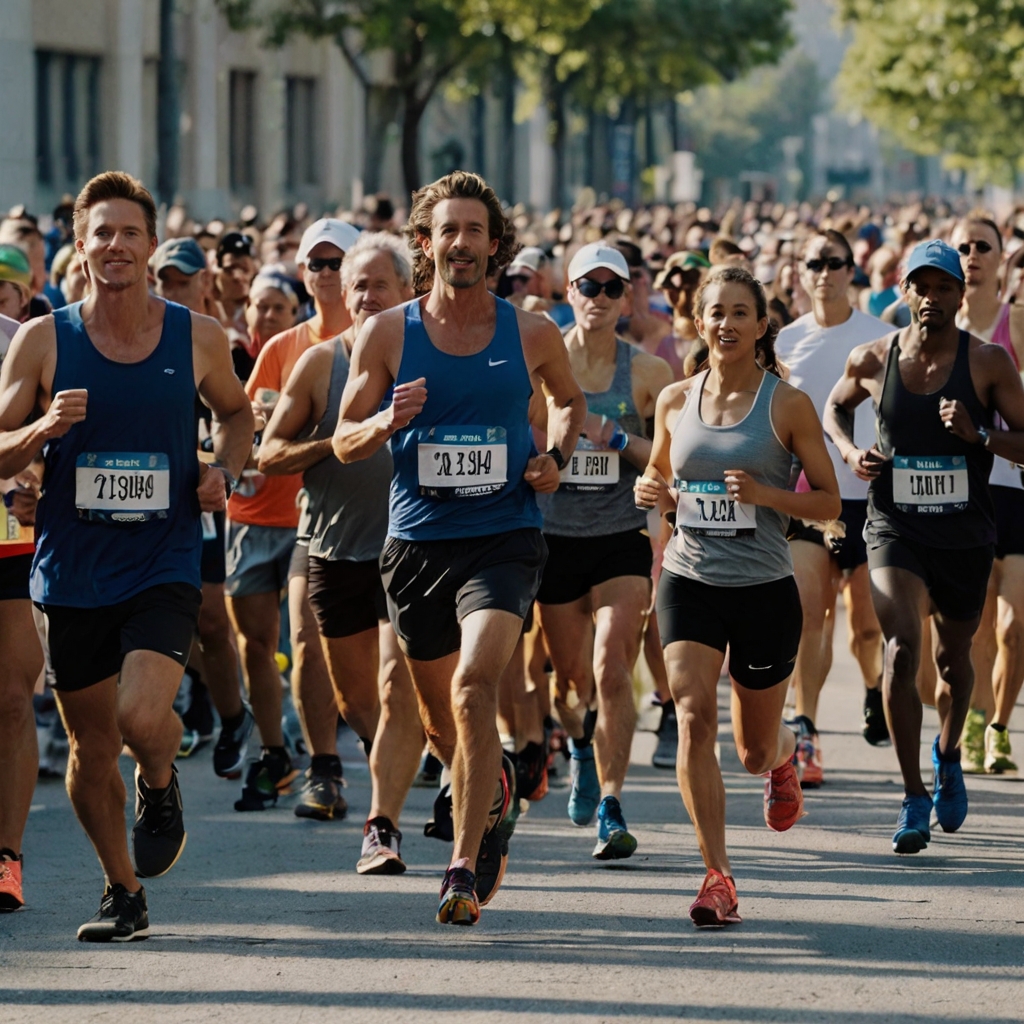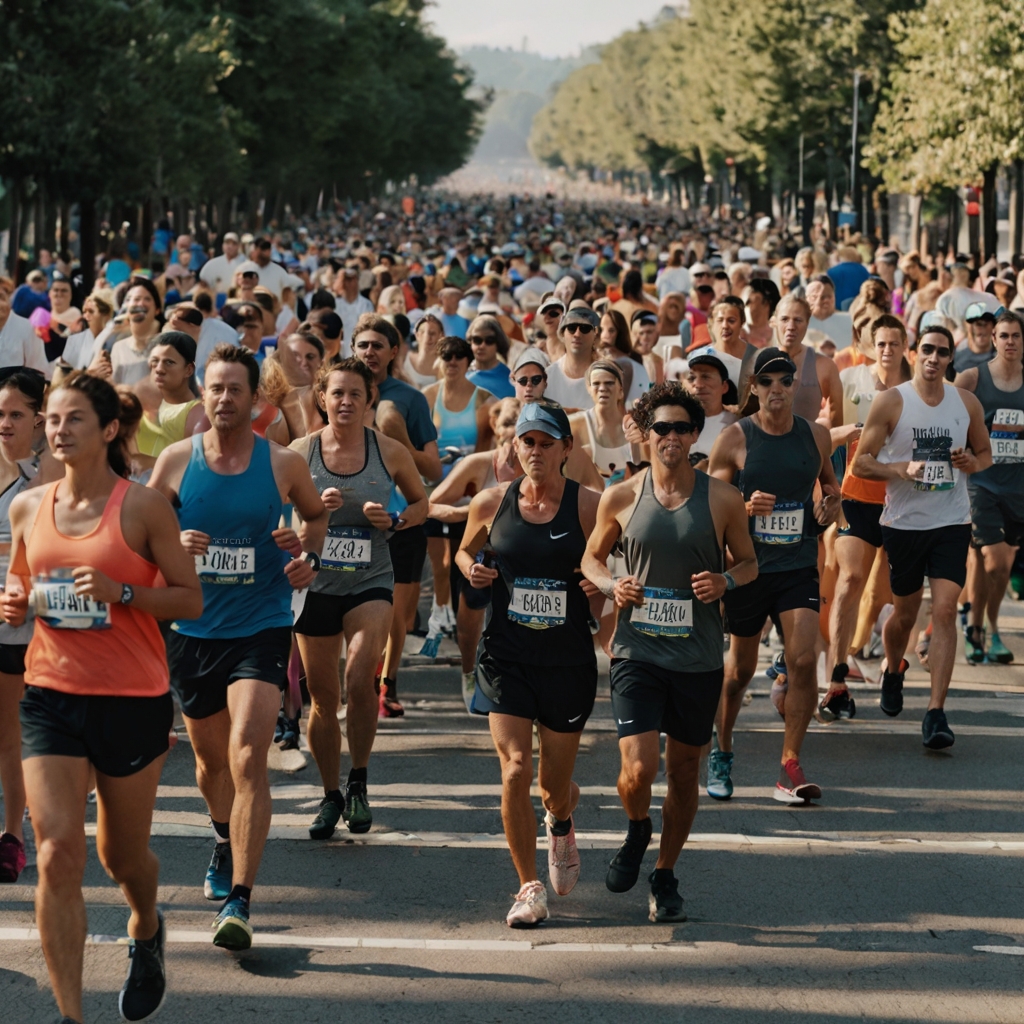This challenging distance is gaining popularity among runners looking to push their limits beyond the traditional marathon. As an ultra-marathon event, a 50k race offers a unique blend of endurance and adventure that appeals to seasoned athletes and ambitious newcomers alike.
The EverySecondCounts team will explain the exact distance of a 50k in miles and what it takes to prepare for such an event. We’ll guide you through understanding the 50k distance, training for your first race, and essential tips for race day preparation. You’ll also learn about the importance of recovery and how to continue your ultra-running journey beyond your first 50k milestone.

Table of Contents
- 1 Understanding the 50K Distance
- 2 Training for Your First 50K
- 3 Race Day Preparation
- 4 Recovery and Beyond
- 5 Here are some FAQs about how many miles is 50k:
- 5.1 Is 50k an ultra?
- 5.2 Can you train for a 50k in 12 weeks?
- 5.3 How many miles per week should you run to train for a 50k?
- 5.4 Is 50km a week enough for marathon training?
- 5.5 How much harder is 50k than a marathon?
- 5.6 What is a good time for a 50k run?
- 5.7 How hard is it to run a 50K?
- 5.8 Is it safe to run a 50K?
- 5.9 Is 50km run impressive?
- 5.10 Do you sleep during an ultramarathon?
- 5.11 How many calories per hour for 50K?
- 5.12 Is an Ironman an ultra?
- 5.13 Is 50 km considered an ultra marathon?
- 5.14 How long should your longest run be before a 50K?
- 5.15 Do ultra runners walk?
- 5.16 What is the average age for ultra?
- 5.17 What age do ultra runners peak?
- 5.18 What percentage of people have run an ultra?
- 5.19 How long does it take to train for an ultra?
Understanding the 50K Distance
Exact distance in miles
You might be wondering, “How many miles is 50k?” A 50k race covers a distance of 31.07 miles. This makes it just about 5 miles longer than a traditional marathon, which is 26.2 miles. While this may not seem like a significant increase, those extra miles can have a big impact on your running experience.
Comparison to a marathon
Although a 50k is only slightly longer than a marathon, it’s important to understand that it’s not just a longer version of the same race. The challenges you’ll face in a 50k can be quite different from those in a marathon. For instance, the pace for a 50k is typically slower than a competitive marathon pace. This is because 50k races often involve more varied terrain and elevation changes.
When you run a 50k, you might find yourself taking 1.5 to 2 times longer to finish compared to a marathon. This extended duration changes how you approach fueling and hydration. While marathons usually have water stations every mile, 50k races may have aid stations spaced further apart. As a result, you’ll need to be more self-sufficient, carrying your own water and fuel.
Common race formats (road vs trail)
50k races come in two main formats: road and trail. Each offers a unique experience and set of challenges.
Road 50k races are less common but can be a good choice for runners transitioning from marathons to ultramarathons. These races are typically flatter and faster than their trail counterparts. If you’re a sub-4:30 marathon runner, you might be able to complete a road 50k using a run/walk pattern without excessive additional training.
Trail 50k races, on the other hand, are more prevalent and offer a completely different experience. These races often take place in stunning natural settings, from mountains to forests. The terrain can be challenging, with significant elevation changes, technical trails, and varying surfaces. You might encounter dirt roads, single-track trails, and even water crossings.
In trail 50k races, your pace can be heavily influenced by factors like elevation gain, trail surface, and weather conditions. It’s not uncommon for runners to alternate between running and power-hiking, especially on steep uphill sections. This variability in pace and effort is part of what makes trail 50k races so exciting and challenging.
When choosing your first 50k, consider the terrain and elevation profile carefully. A race with 3,000 meters of vertical gain will be significantly more challenging than a flatter course. Remember, in trail running, distance alone doesn’t tell the whole story – 10 miles in the mountains can take twice as long as 10 miles on a flat track.
Training for Your First 50K
Building a proper mileage base
To prepare for a 50k race, which is approximately 31.07 miles, you need to establish a solid mileage base. Start by gradually increasing your weekly mileage to at least 30-40 miles per week. This foundation will help your body adapt to the demands of long-distance running and reduce the risk of injury. Remember, consistency is key. It’s better to maintain a steady weekly mileage than to make sudden jumps in your training volume.
Importance of long runs
Long runs are crucial for 50k training. They build endurance, mental toughness, and help you practice your fueling strategy. Aim to include a weekly long run in your training plan, gradually increasing the distance over time. Your longest run should be around 20-25 miles, typically done 3-4 weeks before race day. These runs simulate the physical and mental challenges you’ll face during the 50k, helping you build confidence for race day.
Incorporating strength training
Strength training is a valuable addition to your 50k preparation. It helps improve running economy, reduces injury risk, and enhances overall performance. Aim for 1-2 strength sessions per week, focusing on exercises that target the major muscle groups used in running. Squats, deadlifts, lunges, and core work are excellent choices. Remember to prioritize proper form over heavy weights, especially when you’re just starting.
Nutrition and hydration strategies
Proper fueling is essential for success in a 50k race. During your training, practice your nutrition and hydration strategies to find what works best for you. Aim to consume 60g of carbohydrates per hour during long runs and the race itself. Experiment with different energy gels, sports drinks, and solid foods to see what your stomach can tolerate. Hydration is equally important, so make sure to drink water regularly and consider electrolyte supplements, especially in hot conditions.
Remember, training for a 50k is not just about covering the distance. It’s about preparing your body and mind for the challenges ahead. Be patient with your progress, listen to your body, and enjoy the journey as you work towards your goal of completing your first 50k race.
Race Day Preparation
Gear essentials
When preparing for your 50k race, which is approximately 31.07 miles, having the right gear is crucial. A well-fitted hydration vest is a game-changer, allowing you to carry water and essential items comfortably. Invest in a quality vest that doesn’t chafe and has enough storage for your needs.
Proper footwear is vital for the long distance. Trail running shoes with good traction and protection are recommended, especially if your 50k race involves varied terrain. Consider using anti-chafing products like Body Glide or Happy Nuts to prevent discomfort during your run.
Don’t forget to pack extra socks, as changing them during the race can help prevent blisters and keep your feet comfortable for the entire 31.07 miles.
Mental preparation
Preparing mentally for a 50k race is just as important as physical training. Visualize yourself successfully completing the race, focusing on positive outcomes. Break the race down into smaller, manageable segments rather than fixating on the entire 31.07-mile distance.
Develop a personal mantra or set of motivational phrases to use when the going gets tough. Remember your reasons for taking on this challenge and write them down before the race. This list can serve as a powerful reminder when you face difficult moments during your 50k journey.
Pacing strategies
For a 50k race, pacing is crucial. Start slow and maintain a steady effort throughout the race. Remember, you’re running 31.07 miles, not just a marathon, so conserve energy for the later stages.
Focus on maintaining an even perceived effort rather than trying to stick to a specific pace. This approach is especially important in trail races where terrain can vary significantly. Be prepared to alternate between running and power hiking on steep or challenging sections.
Ignore other runners who might start too fast. Trust your training and stick to your plan. Remember, in ultra races, the person leading at the halfway point often isn’t the winner.

Fueling during the race
Proper nutrition is key to completing a 50k race successfully. Aim to consume 200-250 calories per hour, starting from the beginning of the race. Space out your calorie intake evenly, taking in 50-60 calories every 15-20 minutes.
Focus on carbohydrate-rich foods that are easy to eat on the go. This can include energy gels, sports drinks, fruits, cookies, or even baby food pouches. Variety is important to prevent flavor fatigue and potential stomach issues.
Don’t forget about hydration. Drink to your thirst, but be careful not to overhydrate. Consider using sports drinks to get both hydration and calories simultaneously. However, be aware that consuming too much sugar over a long period might upset your stomach.
Lastly, have a plan for sodium intake. While recent studies have questioned the direct link between sodium and muscle cramps, many runners find that maintaining a proper sodium balance helps prevent issues. Carry salt tablets or electrolyte capsules as a precaution.
Remember, what works for one runner might not work for another. Practice your fueling strategy during long training runs to find what suits you best for your 50k race.
Recovery and Beyond
Post-race recovery tips
After completing a 50k race, which is approximately 31.07 miles, your body needs time to recover. Start by focusing on proper nutrition and hydration immediately after crossing the finish line. Consume a blend of carbohydrates and proteins to replenish your energy stores and aid muscle repair. Aim to drink water and electrolyte-rich fluids to rehydrate your body effectively.
In the days following your 50k race, prioritize rest and gentle movement. Take a few days off from running, but don’t remain completely inactive. Light walks or easy swims can help promote blood flow and reduce muscle soreness. Compression garments and elevation of your legs can also aid in recovery by reducing inflammation.
Sleep plays a crucial role in the recovery process. Aim to get 7-9 hours of quality sleep each night, as this is when your body does most of its repair work. If you’re having trouble sleeping due to post-race excitement or discomfort, try relaxation techniques or gentle stretching before bed.
Reflecting on your achievement
Completing a 50k race is a significant accomplishment that deserves recognition. Take time to reflect on your journey, from the initial decision to train for a 50k to crossing the finish line. Consider journaling about your experience or sharing your story with fellow runners. This reflection can help you appreciate your growth as an athlete and identify areas for improvement in future races.
Analyze your performance objectively, looking at factors such as pacing, nutrition strategy, and mental resilience. What worked well? What challenges did you face? Use these insights to inform your future training and racing plans.
Remember to celebrate your achievement with friends, family, or your running community. Sharing your success can be motivating and inspire others to pursue their own goals.
Planning your next ultra challenge
As you recover from your 50k race, you might find yourself thinking about your next challenge. While it’s natural to feel excited about future races, it’s essential to give yourself adequate time to fully recover before jumping into another training cycle.
Consider setting new goals based on your 50k experience. Do you want to improve your time on the same distance, or are you ready to tackle a longer ultra-marathon? Perhaps you’d like to explore different terrains or elevations in your next race.
When planning your next ultra challenge, be realistic about your training timeline. Allow for a proper build-up period, typically 16-20 weeks for a 50k or longer race. This gives you time to gradually increase your mileage and incorporate specific training elements like long runs and hill work.
Remember that mental preparation is just as important as physical training for ultra-marathons. Incorporate visualization techniques and positive self-talk into your training routine to build mental resilience for your next challenge.
As you look ahead to future races, maintain a balanced approach to your running. Integrate cross-training activities to prevent burnout and reduce the risk of overuse injuries. This might include cycling, swimming, or strength training, which can complement your running and contribute to overall fitness.
By taking the time to recover properly, reflect on your achievements, and plan thoughtfully for your next challenge, you’ll be well-prepared to continue your journey in the world of ultra-running. Whether you choose to tackle another 50k or push yourself to even greater distances, the lessons learned from your first 50k will serve as a valuable foundation for your future ultra-running adventures.


